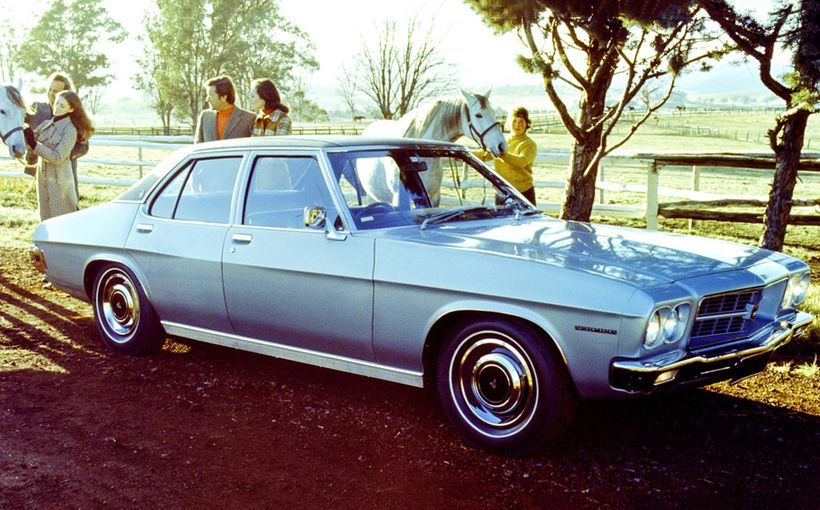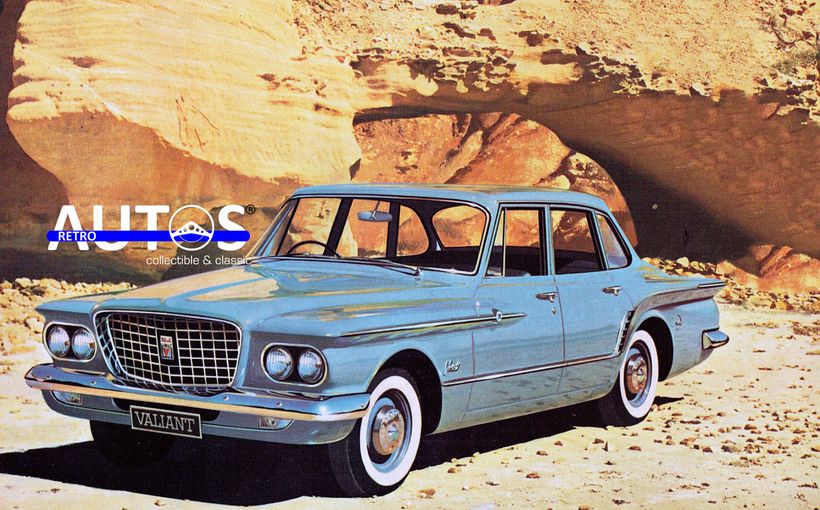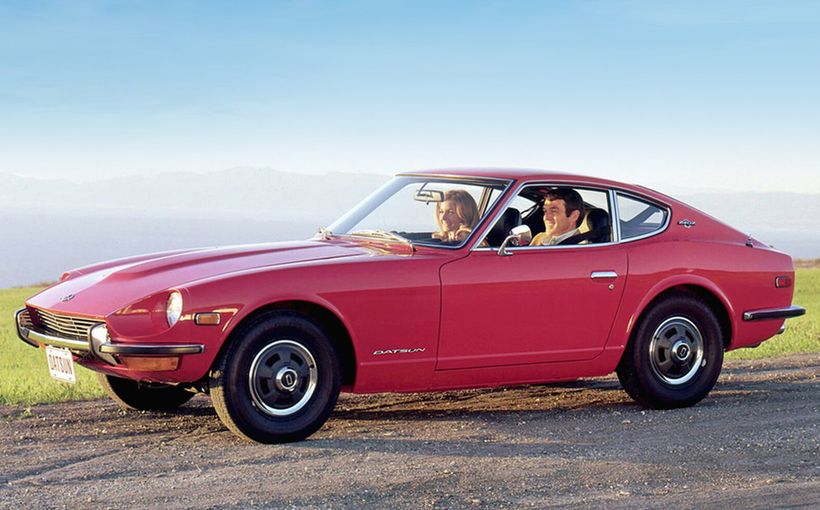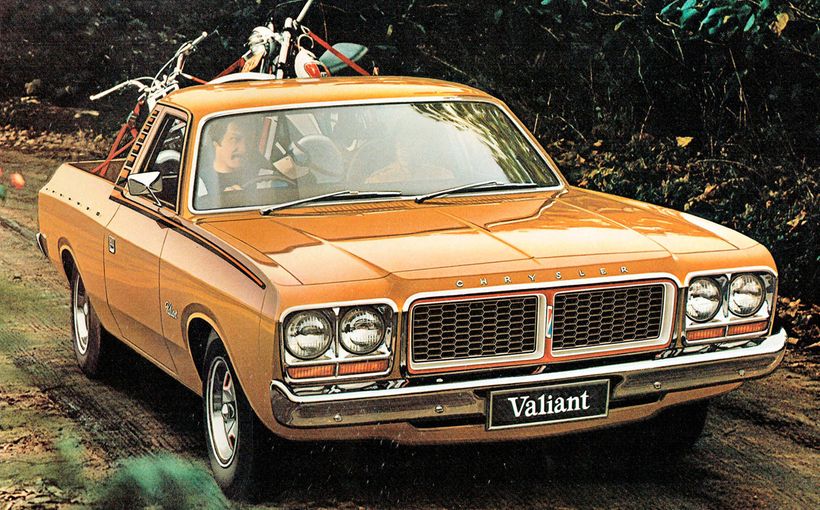Valiant Charger: Chrysler’s unbelievable Aussie super coupe

Chrysler Australia advertising claimed that its all-new Valiant Charger was “unbelievable” when launched in 1971. That was a pertinent description of not only its unbelievable good looks, low entry price, high performance and instant sales success, but also its against-the-odds journey from management thought-bubble to production reality.
“A spin-off from the broad VH Valiant program, the Charger was definitely not part of the originally agreed investment package that managing director David Brown had negotiated at (Chrysler’s US headquarters in) Highland Park,” wrote Gavin Farmer in Hey Charger.
“In fact, it was developed in such secrecy that virtually nobody outside the inner circle of Chrysler Australia – neither the ever-inquisitive Australian motoring press nor, apparently, Chrysler International, knew of its existence. That the Charger was developed in virtual secrecy is amazing enough; that it was a runaway success is the stuff of dreams.”
It was backed by one of the most memorable TV advertising campaigns, which showed people approvingly raising their fingers in a V-sign (which was a hippy gesture meaning 'cool' in the 1970s) and calling out “Hey, Charger!” whenever they were lucky enough to see one drive by. The campaign proved highly contagious and soon Australians nation-wide were doing the same thing.
Showrooms were inundated. No one was more surprised than Chrysler it seemed, which struggled to meet overwhelming demand. Within its first 12 months of production, the Charger was accounting for a staggering 50 per cent of Valiant sales. And the champagne corks were popping even louder when the Charger won Wheels magazine’s prestigious 1971 Car of the Year award. They were heady days indeed. Yet by 1978, just seven years later, the Charger was dead.

Image: Chrysler Australia
VH Valiant: laying the Charger foundations
In 1967 Chrysler Australia boss David Brown secured the relatively small budget of AUD$22 million from the company’s financially-strained head office in Detroit to design, develop and tool a new generation of Aussie Valiants (model code VH) for the 1970s, which was to comprise short wheelbase (111-inch) Valiant and long wheelbase (115-inch) prestige Chrysler sedans, a station wagon, two-door hardtop and commercial variants.
During VH development a fundamental error was made with the styling, which was too heavily influenced by the company’s US design chiefs in appealing more to American than Australian tastes. The end result was high hip lines with small side glass, bulbous flanks, drooping tails and long rear overhangs on a relatively narrow track; the latter evidence of yet another low-cost revision of a chassis platform that could be traced to the original 1962 R-series Valiant.
There was more interior room but the new Valiants looked excessively large, cumbersome and outdated compared to more slim-waisted and elegant HQ Holden and XA Falcon rivals. The new Valiants were perceived as ‘Yank Tanks’ by many Aussies; a design flaw that would prove to be fatal.
On the plus side, there was the new locally manufactured ‘Hemi’ inline six-cylinder engine, which had been introduced with the previous VG Valiant. Although its Hemi design claim tested the credibility of Chrysler’s marketing department, it was an excellent engine more than equal to its Ford and GM-H rivals, with outstanding V8-style torque across a broad rpm range and good fuel economy. For the VH it would be available in three displacements – 215cid (3.5 litre), 245cid (4.0 litres) and 265cid (4.3 litres) in numerous states of tune, from mild to wild.
Even so, as the VH Valiant range was taking shape, local Chrysler management knew it was in trouble. What was glaringly absent was a sporty coupe to attract a younger generation, at a time when two-door coupes were in relatively high demand. The Charger seed was planted.

Image: Chrysler Australia.
Brown stuck his neck out with this top-secret proposal, given how late it was in the VH approval process (late 1969) and that he had to skim around AUD$2 million from an already slim VH development budget to fund it. Against considerable odds, the company’s US bosses approved it.
In January 1970 the Chrysler International studio in Detroit started design work under US designer Bob Hubbach, who ironically was part of the design team that created the unloved VH Valiant range. Even so, he quickly defined a winning design, with styling that eliminated all of the sedan’s faults. It was partly inspired by the 1968 Dodge Charger, from which the name was also derived.
Essential to head office approval was its relatively low production costs, as the Charger coupe and Valiant sedan shared the same bodywork forward of the windscreen and the same rear bumper bar. The doors were shared with the Valiant hardtop, but the rest of the coupe’s bodywork was unique.
The key to its handsome proportions was a substantial 6.0-inch reduction in wheelbase from the sedan’s 111-inches to just 105-inches. Combined with its short rear overhang, this made the Charger relatively wide for its length, resulting in a chunky, muscular stance with universal appeal. The integral ducktail rear spoiler added to its look of rebellious intent.
The size reduction also reduced the coupe’s weight by some 300lb (136kg) compared to the sedan, which added to its sporty nature. And get this: the Charger’s design and tooling development took less than three months. Unbelievable or what!

Image: Chrysler Australia.
VH Charger (1971-1973)
The launch of the VH Charger in August 1971, two months after the VH Valiant range, was one of the greatest face-saves in automotive history because the VH range received the lukewarm response David Brown had rightly feared. Not even the Pacer variant, with its bright colours and garish stripes, could raise the pulse of younger buyers.
So, the launch of the Charger only two months later could not have come quickly enough, as the reception from the Australian media and public was effusive. It was, as planned, a hero car but its halo glowed so brightly that it singularly outshone the VH range it was supposed to enhance!
A low entry price was a big factor in its success. Like its sedan siblings, the Charger was offered in three grades comprising base model Charger, mid-spec Charger XL and top-shelf 770. Plus, there were the hot R/T versions unique to this dazzling new coupe.
The base model Charger was priced at only $2795 (or just over $31,000 today). That got you into the sexiest shape in town but not much else in terms of standard equipment, like its Ranger sedan equivalent. There were skinny 5.5-inch steel wheels, chrome hubcaps and cross-ply tyres, four-wheel drum brakes and the smallest of the three Hemi sixes (215) hooked up to a three-speed column-shift manual. The 245 six with manual floor-shift or three-speed auto were optional.
Heater/demister was standard but cabin cooling relied heavily on the front quarter-vent windows. There was a vinyl floor, basic Ranger instrumentation and tombstone front bucket seats that only tipped forward to allow rear seat access, with no reclining function.
The mid-spec Charger XL at $3195 (or $35,452 today) came standard with the mid-sized 245 Hemi six and front disc brakes, with the largest 265 optional. The three-speed manual gearbox had a sporty floor-shift, with column-shifting reserved for the optional three-speed auto.

Image: Chrysler Australia
The XL was a nicer-looking package than the bare-boned base model, with chrome sill and wheel-arch trims, chrome wheel covers, full carpeting, reclining bucket seats, a toggle-adjustable driver’s door mirror and other creature comforts. Buyers could also choose from many options.
The top-shelf Charger 770, starting at $3625 (or $40,224 today) clearly had Holden’s luxury HQ Monaro LS two-door coupe in its cross-hairs, with standard equipment levels similar to the most luxurious VH Regal sedan.
The 770 exterior packaging had more chrome highlights, wider 6.5-inch styled steel wheels and radial tyres, unique vinyl trim around the side glass (no front quarter-vent windows on this model) and rectangular quartz halogen driving lights in the grille inboard of the rectangular head lights. The interior had more sumptuous seating, a Regal dash with faux woodgrain highlights and a delightful padded three-spoke sports steering wheel.
Standard engine was the punchy 265HP (High Performance) two-barrel Hemi six, but Charger 770 buyers could also tick option code E37; a milder road version of the R/T E38 race engine (see R/T section) with either three-speed manual or auto and both with floor-shifts.
V8 lovers had the choice of the locally-assembled 318cid (5.2 litre) Fireball V8 with Chrysler’s Torqueflite three-speed auto, or later an imported 340cid (5.6 litre) V8.

Image: Chrysler Australia
The unbelievable R/T
The R/T, which like Charger and Hemi was another US Chrysler trademark, left no doubt how serious Chrysler was about knocking off Ford and Holden on the race track and hopefully capturing the hearts and minds of the fickle youth market.
With its choice of bright exterior colours, overt black-out paint treatments, quartz halogen driving lights, special instrument panel etc, the R/T name (Road/Track) alerted enthusiasts to its split personality.
It was what lurked under the bonnet that really got pulses racing. The base R/T came with the punchy two-barrel 265HP High Performance Hemi six rated at 218 bhp (162 kW).
Next step up was a hotter R/T variant with the milder E37 road version of the full-house E38 track engine mentioned earlier, equipped with a trio of 45mm DCOE Weber twin-choke side-draught carburettors mounted on a unique cast-aluminium inlet manifold.
This had been created through a unique collaboration with Weber engineers in Italy and was a stunning development. No major Australian car maker had adopted such an elaborate and exotic carburettor and inlet system and it certainly had the go to match the show, with the E37 option boosting the 265 Hemi’s power output to 248 bhp (186 kW).
Top rung of the performance ladder was the R/T E38. The triple-Weber E38 version of the Hemi Six Pack was designed and built by the factory as a ready-made race engine, with a hotter camshaft and numerous upgrades of internal and external hardware to improve performance and durability in competition use.

Image: Chrysler Australia
The E38 was rated at 280 bhp (210 kW) at 5000 rpm with a 318 ft/lbs (431 Nm) of torque at 3700 rpm. And like its VG Pacer predecessor, the R/T E38 could be upgraded to full racing specs with another factory option exclusive to the E38.
The A84 Track Pack included a more direct 16:1 ratio steering box, Sure-grip LSD rear axle assembly with a choice of diff ratios, lightweight 14 x 7-inch alloy ROH wheels, a revised brake package that included finned rear drums and thicker front rotors, plus adjustable front mounting points for the rear leaf springs to aid suspension tuning.
Proof of the A84 Track Pack’s Bathurst intentions was also a huge 35-gallon (159-litre) fuel tank with twin fillers for fast refuelling. This left barely enough room for the spare tyre and in effect rendered the boot area off limits for carrying anything as superfluous as personal luggage.
The second and final competition version of the R/T Charger was the E49 released in June 1972. Like its E37/E38 predecessors, it was available in a milder E48 road version.
The E49 was the definitive interpretation of the breed with the most powerful version of the Hemi Six Pack rated at 302 bhp (226 kW). It also had a long-awaited Borg Warner four-speed gearbox that finally gave frustrated Charger racers the low first gear they’d always wanted, with a prominent number ‘4’ displayed on the body’s vertical stripe to prove it.

Image: Autopics
The R/T E49 was a sensation. It was the most powerful production six-cylinder car of its time, which straight off the showroom floor could do a 14.5-second standing quarter. That also made it the fastest accelerating model produced by the big three.
Although the Charger was enormously successful in New Zealand, winning numerous major championships and endurance races, it didn’t enjoy the same success in Australia. Even so, third place outright at Bathurst in 1972 for a privately-entered R/T E49 showed the untapped potential of Chrysler’s Charger competitions program, which sadly lasted for less than one year due to shifting corporate priorities.
In the brief 18-month production life of the VH Charger it sold just under 18,000 units. However, when you compare that to VH Valiant sedan sales of only 29,555, it shows that the Charger’s sales volume alone contributed more than 60 per cent to this dismal tally. The Charger had done a brilliant job in adding much-needed respectability to the VH Valiant sales charts - but it couldn’t last.

Image: Chrysler Australia
VJ Charger (1973-1975)
When Chrysler Australia released the mildly facelifted VJ series Charger in March 1973, the long-term outlook for the Adelaide company was bleak.
The VH Valiant range and CH Chrysler luxury range had (literally) tanked and the Charger’s huge initial buyer demand had also evaporated, as the hot R/T models had been axed in the wake of the Supercar Scare of 1972 and with them went the competitions program. The unloved Pacer sedan was also dropped, along with the popular two-barrel 265HP Hemi six option. Clearly, performance was a dirty word at Tonsley Park.
Not only that, full-size personal coupes like the Charger, Valiant/Chrysler hardtop, Holden Monaro and Falcon Hardtop were becoming less appealing to Aussie car buyers. Growing concern over air pollution, combined with the first global energy crisis, created perceptions of these large and impractical two-doors as ostentatious ‘gas guzzlers’ from a bygone era of excess.
Chrysler in the US was also feeling the pinch, so with no development funds in the pipeline to fix the styling flaws it imposed on the Australian subsidiary’s slow-selling range, there was precious little budget available to make any major changes to the much milder VJ Charger – and it showed. The facelift was confined to a new grille, round headlights and revised tail light detailing, along with minor interior changes.
The loss of the hero R/T variant trimmed the model choice to just Charger, Charger XL and Charger 770 and the choice of factory options was also slashed as the company tried to minimise its production costs and parts inventory.

Image: Chrysler Australia
With fuel economy and reduced emissions now high priorities, electronic ignition became standard on all engines except the base 215. Engine choices were similar to VH until stocks of the imported 340 V8 engines ran dry, with the luxury Chrysler’s thumping 360cid (5.9 litre) V8 optional in the premium grade 770 from 1974. This was the largest displacement engine offered by an Australian car manufacture to that point. Transmission options were also largely similar to VH, with the major change being the addition of a four-speed manual.
Standard equipment levels were also boosted during the VJ Charger’s 30 months in production, but these minor improvements were not enough to spike renewed buyer interest, which prompted Chrysler to create its first limited-edition model called the Charger Sportsman.
Each of the 399 examples featured a 265 Hemi six with four-speed manual floor-shift and an eye-catching Vintage Red and contrasting white exterior, with an equally garish red and white interior with red plaid cloth seat inserts.
It was also possible for a performance-minded VJ Charger buyer to build a ‘hot’ Charger, because a batch of R/T E48 Hemi Six Pack engines from VH production remained in stock. So, by ticking both the E48 and A54 (Sports Pack) option boxes, the canny VJ Charger buyer could order the closest thing to an R/T without the name.

Image: Chrysler Australia
VK Charger (1975-1976)
When the VK Charger was released in September 1975, it was based on a design which was by then more than four years old. That wasn’t unusual at the time, given Holden’s then-latest HJ range was based on an HQ design that was also more than four years old. And Ford’s XB Falcon range was two years into its model cycle as the first facelift of the XA launched in March 1972, which by then was three and a half years old.
However, GM-H and Ford had the luxury of much larger product development budgets than cash-strapped Chrysler, which meant that their facelifts (the HJ and XB are good examples) were far more elaborate and therefore convincing as new models. By comparison, the Charger was really starting to show its age, because apart from minor tweaks of grille and tail lights it was hard to pick the ‘new’ VK from the ‘old’ VJ.
Chrysler’s continual belt-tightening also saw the base model Charger being dropped, leaving just the Charger XL and Charger 770. Engine and transmission choices largely carried over and the Charger benefitted from upgrades across the Valiant range including a new steering column stalk which controlled all wiper/washer/head light/indicator functions, plus a new brake proportioning valve to prevent rear-wheel lock-up.

Image: Chrysler Australia
The VJ Charger Sportsman encouraged Chrysler to offer another limited-edition model with a red and white theme called the White Knight, but only 200 examples were offered this time which suggested that about half of the Sportsmans had been hard to find buyers for.
All White Knights were powered by the largest 265 Hemi six with a choice of four-speed manual or three-speed auto. They were available in a choice of two bright exterior colours, Amarante Red or Arctic White, with thick contrasting side stripes incorporating the Charger name plus unique striping between the tail lights. The seats facings were white with bold red centre stripes with contrasting dark red door trims and carpets.
Even so, VK Charger sales of only 1625 units in the 11 months it was on sale were threatening its very survival, which was indicative of a larger existential challenge to the company itself.

Image: Chrysler Australia
CL Charger (1976-1978)
It was inevitable that the CL Charger, released in August 1976, was the last of the breed given its interminable sales slide. However, it must be said that the Charger was not alone by then, as the Monaro and Falcon Hardtop also suffered crippling sales declines which ensured the demise of all three of these two-door coupes before the end of the decade.
The last Charger, although available only in 770 trim, featured more extensive exterior changes than its VJ and VK predecessors. This was highlighted by twin headlight pods on each side of a bold new grille design shared with the CL Valiant Drifter panel van, with honeycomb-patterned plastic mesh inserts and a chrome outline.
Engine options were the venerable 245/265 Hemi sixes and 318 V8, as the 215 six and 360 V8 had been dropped. The sixes offered a choice of three or four-speed manual or three-speed auto, while the V8 could be optioned with either three-speed auto or, finally, a four-speed manual.
At launch all CL engines featured changes to comply with new ADR 27A rules limiting exhaust emissions. By 1978 they were also equipped with Chrysler’s latest computer-controlled Electronic Lean Burn (ELB) spark control system, developed by the company’s US division to minimise emissions and optimise fuel economy.
In June 1978, only months before the end of Charger production, Chrysler squeezed in a final special edition called the Drifter. Available in white, yellow or orange exterior colours, it featured similar body striping to that of the CL Valiant Drifter panel van, plus radio, bumper overriders, chrome or body-coloured bumpers and unique cloth interior trim. All Charger Drifters were equipped with either the 265 six or 318 V8 and four-speed manual floor-shift. The last CL Charger left the Tonsley Park line in June 1978.


Images: Chrysler Australia
The K-code cop cars
Chrysler created several police specials based on the Charger which proved popular for highway patrol duties in Victoria, South Australia and NSW, as their performance was enhanced by factory-developed packages grouped under a common K code. These included drivetrain and suspension enhancements using many components developed for the discontinued R/T models.
The first police Charger was based on the VJ, in XL grade with two-barrel 265 Hemi six and four-speed manual transmission. To this Chrysler added the K10 police Charger package, which included E36 engine upgrades comprising the R/T Charger dual-outlet exhaust manifold plus heavy-duty E49 crankshaft, main/big-end bearings and baffled anti-surge sump.
Chassis upgrades included the A84 Track Pack’s more direct 16:1 steering gear plus uprated front torsion bars and front/rear sway bars, E49 rear leaf springs and shocks, heavy-duty brake package with front disc brake dust shields removed (to improve cooling), Suregrip LSD and 6.5-inch steel sports rims. The K code also included sun-visor, three-spoke sports steering wheel, reclining buckets seats and lots more.
This package resulted in formidable performance capabilities, which according to Hey Charger co-author Gary Bridger were “virtually a halfway house between a base R/T 265 four-speed and the full-house E49: very much a wolf in sheep’s clothing.”

Image: “Highway Patrol Images” Flickr.com
More K-code police Charger packages followed for VJ, VK and CL models and their applications varied depending on model and state of deployment.
For example, the K12 package for VJ and VK Chargers introduced in 1975 was the same as K10 except that the Borg Warner four-speed manual gearbox was replaced by Chrysler’s heavy-duty A727 Torqueflite three-speed auto. This not only eliminated plenty of arm and leg work for HP officers but no doubt many clutch replacements too.
The K13 package followed, which replaced the 265 Hemi six with the 5.9 litre 360 V8. This big grunter had superior straight-line performance as you’d expect, but the V8’s extra weight over the front wheels also meant inferior handling compared to the lighter Hemi six version.
The final K16 package introduced the 318 V8 as a replacement for the discontinued 360 and available only in the VK and the final four-headlight CL police Chargers. Though emission controls and the 318’s smaller displacement saw a noticeable drop in power, highway patrol officers generally found them smoother and less unwieldy than the more muscular 360 versions.

Images: Chrysler Australia
An Aussie motoring icon
If Bathurst wins were awarded on the basis of sheer commitment alone, the Charger R/T E38 and E49 in full A84 Track Pack specification would have cleaned house. Given Chrysler Australia’s funding restrictions and component supply challenges, what the small Adelaide-based company achieved in creating those road and track warriors was astonishing.
The Charger’s interminable tumble from instant sales sensation to barely a blimp on Chrysler’s sales radar less than seven years later, with a relatively small production total of 31,857 units, was a sad and undeserving end for such a unique Australian icon.
Its glory days may have been short-lived but decades later the Charger is widely celebrated by many passionate owners throughout Australia and New Zealand. Which, of course, is entirely appropriate for a car that was so unexpected and yet so successful that Chrysler was left with only word to describe it - unbelievable.









